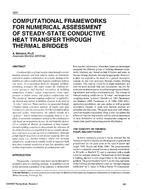Click here to purchase
Today, more than 26 million European children are living in unhealthy homes putting them at higher risk of experiencing health problems. Good air quality, sufficient access to daylight and adequate ventilation are important for creating a healthy indoor environment in any home, with the effects reaching far beyond childhood. Our research is based on analysis of the Eurostat microdata from the EU-wide survey “Income and Living Conditions in Europe” (EU-SILC). The results show that mould and dampness, as well as poor ventilation, can take a child from good health to poor health with links to higher levels of asthma, allergies, eczema, and lower and upper respiratory conditions. A growing number of children are burdened with ailments that challenge their ability to be present and fully engaged at school. Across Europe, the prevalence of children affected by asthma has become an increasing problem in the last few decades. It is not just childhood health that is affected by poor indoor climate. Unhealthy home environments can result in higher absence from school and work, putting a greater strain on both children, parents and the economy. Tackling the unhealthy homes in which a third of European children live and the many unhealthy schools and day-care centres they attend, is an opportunity to improve the health and quality of life of the most vulnerable Europeans. Furthermore, it is also an opportunity to improve societies, deliver on our energy and climate commitments and address inequalities, while saving money and valuable resources at the same time.
Product Details
- Published:
- 2022
- Number of Pages:
- 9
- File Size:
- 1 file , 960 KB
- Product Code(s):
- D-IAQ2020-C2-C38
- Note:
- This product is unavailable in Russia, Belarus


